On my way to Nepal! Changing in Muscat to depart at 2.20 a.m. with Oman Air. Ok, this is really the first flight where I am the only white person on board. Nice! Feels like being on a different planet. 😉
This post is the final post of the world-round trip. You may expect to learn about Nepal, life at a monastery and you may perceive my final reflection about the whole world-rount trip.
Start in Kathmandu, capital of Nepal
Nishan and a taxi driver, both from the organisation Karmalaya, picked me up from the airport. We got stuck in a traffic jam for 30 minutes because a truck digged itself into the ground at a main intersection. Guys, traffic here is crazy. They have potholes in the road a Smart (smallest Mercedes Benz) could easily fit in. These potholes appear in the middle of the city and are not marked. We arrived safely at the Karmalaya home-stay place and I was shown a room to sleep. There, I met Julia who is living in Leipzig at the moment. Together with Bogati from Karmalaya, we explored Kathmandu. We stopped at Dream Garden. A very beautiful place.
At a tailor I ordered a local dress to be tailored individually. After that, I further explored the city. Nepalese people do not smile as much as people in Sri Lanka and Vietnam. Their nominal GDP per citizen is $733 – per year! (IWF 2016 estimation) This makes them ranked 172 of 190 in the world. It’s an economically poor country. I hope to support their economy with my dress purchase.
We started the next day with some yoga on the rooftop, followed by a continental breakfast. I did some reading and got sleepy. What’s better now than having a power nap? Pregya taught me some Nepali language. The language has some similarities to German, we figured. After that I did some reading again, got sleepy once more and, well, …I did another power nap. Haha. Bhagwan, the local Karmalaya founder, woke me up to go for a sightseeing trip. I learned about Buddhism and their way of thinking. It’s all about Karma – the positive way of thinking. The first place we went to, was centered around three big Buddhas. The three of them symbolise compassion, wisdom and purity. We continued walking up Monkey Hill and enjoyed the view from up there. I could learn about traditional local paintings. I was kind of impressed by their work and the passion they put into the paintings. I bought one of them. We continued our way to a non-profit café called Mahabir Dai’s restaurant. Mahabir Dai is a very famous social entrepreneur who brought internet to many people especially to far out villages in Nepal. We continued walking through the old town where we saw buildings from the 16th century.
In countries like Nepal, I sometimes feel like being on a different planet. Imagine yourself being at one of these far out planets from the Star Wars movies, e.g. Tatoeene. People are sitting in their garages next to the main sandy street repairing engines, motor bike tanks, breaks and tires. Dirt, oil and engine parts everywhere. The streets are of such bad quality. Potholes everywhere, no middle line, suddenly gravel only. Water pipes lying on the street’s surface. Dust and smoke in the air. Many people carry a mouth protection for their lungs. When we came back home, our feet were soaked in dirt.
In Nepal, there live 132 different ethnic groups. The people in fact look all very different. Hinduism suggests to believe in about 33 Million gods.
The next morning, I got up at around 7 a.m. to have breakfast. After that I took my laundry to make my way to the city centre in one of these tuk-tuks. Route number 5 is the right tuk-tuk way, I remembered. Inside these tuk-tuks they easily fit 15 people plus two standing outside. My friends from Karmalaya recommended to go to Thamel. After I had arrived in this area, I asked someone about a laundry place. € 1,4 per kg cleaned machine wash and dried within the same day. After that, I thought, I might search for the tailor place, where I ordered a tailored traditional dress the day before yesterday. Where the hell was it located? I walked around, searching, being constantly approached by locals wishing to sell their tours and stuff. Have I stated already that the roads are of such a bad quality? Scooters, motor bikes and cars everywhere in these narrow, dusty and stinky roads. The shops partly in great contrast to that are comparably clean. After some 3 km of walking I found the tailor. The dress was promised to be ready by 6 p.m. for that day. I was lucky, it was ready to be picked up already now in the morning. I added a traditional hat and made my way back to the Karmalaya place while talking to some Indian state basketball player, who was around for some championship.
Back at Karmalaya home-stay I put my new traditional dress on. Even the house mama showed great appreciation towards the dress. 🙂 After some lunch, I relaxed and did some reading. At 2.30 p.m., Bogati and I started for a nice sightseeing tour. Sure, I wore my new dress. You guys should have seen the looks from all the locals – especially the girls. Haha. We explored a temple, which was close by, from the outside. It’s very important for Hindus and they call it Pashupatinath. Then, we went to the place where they burn the dead people to put their aches into the river. These funerals take place in public for everyone to watch. We continued our walk to Bodnath where we visited Boudha Stupa and had some food, fruit lassi (juice) and water. A taxi brought us all the way back to Thamel where we picked up the clean laundry.
Walking distance of that day: 23 km and luckily no notable pain in my joints. 🙂
Nagi Gumba Monastery
The start of an inspiring day. That day, we headed to the monastery where I was about to spent several days to do voluntary work.
I woke up at 7.00 a.m. at the home stay to pack my stuff and to have some breakfast. Our driver was waiting for Bogati and me to bring us to the monastery. A trip of less than 10 km. Normally, travelling time would be 45 minutes. Not for us. There was little rain last night. We reached the boarder of the hills (everything below 5000 m is called a hill) to make our way up into the national park. First, we reached a place that was so muddy that we could not pass through. The detour brought us quite close to the monastery already but the road was blocked by an impassable construction site. The detour, suggested by locals, was identified to be too muddy again. So we went back all the way down to find a different route. That route was blocked for any unknown reason like you would know it from a war scenery. Fences, wooden boards, rocks and concrete pieces. So we had to take a different route. Ok, all these roads are single lane roads. Cars coming from the opposite direction. A western person would not even identify this as a road. Each forest, country or gravel road I knew – even the death road in Bolivia – is of better quality. We were shaking in the bus left and right all the time. My fingers even hurt after the ride from holding at the handle. We drove up the hill as far as we could get with our small rear wheel drive van. At one point, the bus could not make it any further. The road was just to uneven. We had to walk. I changed to my once lost, but still loved, hiking boots and I put that 20 kg backpack on my shoulders holding the guitar in one hand. Ok, let’s do some uphill workout, I thought. 431 meters in altitude lied ahead of us to be made within 3,67 km. A nice view and the desire to see the monastery motivated to go on and on. It was warm, we sweated and had only limited water with us. After 1 h 28 minutes we reached the top. Wow, what a place! Nagi Gumba. Small children in Buddhism clothes running around. We entered the main building after we had walked around it clockwise. Good mantra, I learned. Bogati walked towards the kitchen were two women were inside. He knew one of them. We dropped our backpacks and sat down on a bench. A nun served us some sweet water and some purified water. A conversation in Nepalese was going on, I could not follow it. We received some tasty vegetarian lunch. Rice, potato curry, green leaves and “Dal Bhat”. I was wondering what’s the name of the nun and so I asked: “Tapai ko naam ke ho?” She answered: “Sonam”. Afterwards, I was shown a room with four empty beds where I may stay in. However, I may not play the guitar in that building. They suggest to play the guitar under a tree outside. We went outside to give the children some soap bubble play. Wow, they had so much fun with it. Jumping around and climbing up somewhere to make the bubbles last longer. Bogati showed me the area and where to find the bath room, the monastery, the second kitchen and the meditation room at the rooftop.
Some school classes from Kathmandu arrived at the monastery. More than 200 pupils. They had lunch on the meadow in front of the monastery. We had the idea to play a ball game with them. The game requires some music which we decided to produce with my Bolivian guitar. While waiting to start, around 20 students stood around me asking to play for them. I said, I’ll play during the game. One student proclaimed to play the guitar. Another could sing very well. So I gave the guitar to him and after some seconds about 30 students around us sang a Nepali song together. Ups, we forgot about the students inside the monastery who required silence for learning. Bogati somehow organised to play the game little bit further down the hill. So we played the game with the children and the winner received the football we brought from Kathmandu. A winner photo should not be missed. What an experience. Thanks for that, Bogati!
The daily schedule in the monastery:
5.30 – Puja (pray)
8.00 – breakfast
11.30 – lunch
3.30 – tea
4.00 – Puja (pray)
7.30 – dinner
Bogati left and went back to Kathmandu. I took some time to read Joseph Murphy “The Power of Your Subconscious Mind“. Before I went to tea, I had dressed up in my new Nepali clothes. Sonam and I met at the rooftop of the monastery. One could see how her heart opened when she saw that Nepali dress. Sonam noticed that this is the first visit of a western male person, wearing a local dress. Later I understood, she has been living in the monastery for 20 years. Don’t I look smart in this tailored cotton? 😉 Sonam picked some fresh rosemary leaves to add to the tea. This tea tastes amazing. We talked a little bit when suddenly the bell rang. “It’s the time for monastery”, Sonam said. I looked at my tea, the cup still full as of the hot content. “Langsam, Langsam”, Sonam continued in German. “It means slow, slow, right?”, she added. “Sehr gut!”, I said. Sonam gave me an empty small cup of tea where it was written at the bottom: “Made in Germany”. After I had gotten some final instructions from Sonam and after I had finished my tea I went to the monastery with my small cup. Before the ceremony, I greeted the nuns and children with “Namaste” folding my hands and I had some small talk with a nun in front of the monastery. They speak little English. After most of the Buddhist had gone inside, I followed. Just after I had entered the building I bowed while folding my hands. Then I made my way to the right rear corner. I sat down on a mat, just like Sonam recommended. The ceremony began. Voices praying together, horns and trumpets being blewn and big drums being played. The believers read from their book. Some hand snipping and hand clapping was included. All with a special meaning. Also some slight mixture of praying and a touch of singing happened. They serve tea with butter and salt. Some of the younger people seemed to talk to each other all the time. Some older people seem to be very concentrated to get closer to nirvana. I just watched and thought, how I can make best use of these rituals in the next view days in order to think. The ceremony finished after 90 minutes. Then, I did more reading and played the guitar outside. There is this very special spot. A tree on top of a big round podium. While playing the guitar up there, Sonam winked down from the monastery confirming dinner at 19.30 p.m. Crazily, I was speaking German to her. Haha. I continued playing the guitar, when more and more young students came up in their traditional Buddhism clothes. “Can you play a song?” I played my favourite song from Passenger, “Let her go”. This was so intense. Sitting under that tree, around 30 children eyes looking at me and listening carefully. They valued the play with a loud applause and big smiles. After that, I handed the guitar to one of the students. They loved to just try it and create some sound from it. They might have never seen a guitar before. They smiled and laughed loudly when the guitar produced a sound by their affection. When I told them that I have to go to dinner now, they produced a loud “Good bye”. Walking to the monastery building, they still asked all these standard questions. The questions you know when you start learning a language. So cute! “What’s your name”, “Where are you from?”, “How old are you?” I made it back into my room just in time to put back the guitar. There, Sonam, about 1.55 m tall, looked through the door gap. “Come in.”, I said. She opened the door and asked whether I could open her medicine bottle. While operating on that bottle she sat down and asked me to join next to her by putting her hand onto the mat. We talked and I could ask all the questions I had from the day and I shared my reflections. I think, I’ve put her into my heart already. 🙂
After half an hour of talking, we went to the kitchen to have dinner. We continued to talk. The day finished with three rounds of walking around the monastery clockwise. Good mantra.
Wow, what a day! Full of so many stunning impressions. I’m writing this text lying on my bed. A 3 cm thick mat underneath my body. Below just wood – no slatted frame. In a national park in Nepal, a third world country. Not planed and not imaginable one year ago. This is kind of the great unexpected experience. Forming you as a character.
I’m going to sleep now. I want to make a decision about my future path within six days. The monastery calls at 5.30 a.m. tomorrow.
My bed and room:
The tree I played the guitra underneath:
Alarm, 5.10 a.m. Snooze. 5.25 a.m. I told myself: Move! I jumped into my Nepal dress and went down into the monastery. To me, the ceremony appeared pretty much to be the same as yesterday afternoon. However, no deep horn instrument was used. I started thinking about what I want to do in the future. Well, which professional career path am I going to put energy in. Bringing to my mind three of my interdepend dreams. Content and ideas came up and joined my thoughts. I started listening to my heart and stomach. What feels good and what feels bad. There is a good emotion. Verifying by the force of my conscious mind. The path appears to be reasonable. Let’s take that path and think it further through later….
6.45 a.m., I went back to my room to continue reading this amazing book from Joseph Murphy. Since I started reading that book some approaches came to my mind which I had been given by my dad in childhood. I kind of forgot about them. I’m now already applying the concept presented in the lecture. So far, I learned that the human mind is made of two parts. The conscious and the subconscious mind. Whatever you want to achieve is possible by directing your conscious mind and thoughts into the desired direction. By means of that you programme your subconscious mind to act for you automatically. Think about it! How magical is that? A very recommendable read. Especially for folks, having any kind of disease. Everything can be healed just by thoughts. Sounds unbelievable? Read this book. The Power of Your Subconscious Mind
Breakfast time. I went down into the kitchen to see Sonam. She prepared one scrambled egg for each of us and we had toast with peanut butter and honey. I did the dishes. That is Buddhism, it’s all about mutual giving. After we had gone for a little rainy walk, there was time for some morning reading. Sonam then knocked on my door and we went up on the rooftop to do some laundry. Hand wash for one and a half hours with curd soap. Break, ten more minutes for reading. We met to the kitchen at 11.30 a.m. to prepare a vegetarian lunch together. Great food they have!
When talking with Sonam, she is using a quite silent, passive, but also powerful voice. An English conversation is possible but we have to use your hands. 😉
After lunch, there was some little time for reading again. Then, window cleaning. After that, again, some rest for 40 minutes, followed by a nice jasmine tea. I changed my working clothes for my Nepal dress to go to the afternoon monastery. It’s a Saturday and many tourists are around. Not sure how the Buddhists felt, but when the tourists walked through the monastery, and even took pictures with the nuns during their prays, I felt quite disturbed. Instead of watching the ceremony, I did some thinking and meditation. After the monastery, Sonam and I organized and prepared some bed sheets and covers. Later, I met the nun “Kusang”. She joined us for cooking and having dinner together. Momos, this is what we cooked. During the conversations, I learned more about “Kusang” and I showed the two some pictures of home in Germany.
We finished the dishes at 22.00 p.m. and I went to bed.
This morning, I skipped the pray. Better to get some refreshing sleep. We had a big breakfast at 8.00 a.m. After some minor household work, we started for a hike into the hills. Sonam stopped and to my surprise she took out some flags on a rope. Oh yeah, she’s got these traditional flags and we will hang them up between the trees. Nice! Oha, the last time I climbed a tree is more than 17 years ago. Haha. Still, the skills are there. Yeah! We coloured the area in nice yellow, green, red, blue and white colours. After the decorations were finished, Sonam prepared some snacks and an atmosphere for her to pray under a tree in the shadow looking at the beautiful mountain ahead of us. The valley of Kathmandu was behind us. While going back, we stopped at a house with a nice garden along the way. There, we got some branches of a tea bush and some more branches to plant a new bush. On the way, Sonam gave some of the plants to the military guys and later at the monastery to other nuns. In Buddhism it is all about giving.
Back in the afternoon, we prepared lunch and I cleaned some more windows in the upper kitchen. After some reading, it was time to get a new appropriate haircut to fit into the local community. 😉
A nice soup was followed by walking three rounds around the monastery to finish the day. It’s absolutely nice here, but I have to confess that I’m looking forward to home now!
The next day started with monastery at 5.30 a.m.. The routine having breakfast at 8.00 a.m. is slowly going into my blood. Today it’s kinda Woman’s Day here, so the prays continued throughout the morning. I followed them after breakfast for another hour doing my thinking. And I made a decision about my future.
After the monastery, I did little reading but mainly video editing with the footage from Vietnam and Sri Lanka. Lunch at 11.30 a.m. Afterwards, we did lundary again and some minor other things. More reading and video editing followed. In the evening, I sat under my favourite tree with Sonam and we did some “blabla”, like Sonam used to say. 🙂
Jeff, a French guy was about to stay overnight at the monastery and we talked for some time. He’s a photographer with a heart for traveling and framing the bad things happening on our planet. Currently he is photographing street children in Kathmandu. We shared dinner together and had a good conversation.
The next day, a girl who’s name is Tassi walked up with a local guy called Krishna. We started talking at the roof top and had some tea and snacks which Sonam prepared. Tassi is originally from around Hannover but currently living in Switzerland. In Nepal, she’s doing yoga training to become a trainer herself. Krishna is teaching her.
I asked her my question: “Living in the current moment and accept everything happening thankfully.”
In the evening we made some pasta together. It was not really Italian style pasta but more like an Italian, German, Indian mix. Haha. It tasted very good.
I realised this was the fourth day without internet. Wow, that hasn’t happened to me in quite a while. Do I miss anything? Nope. The only thing I’m missing, Is to cloud backup my pics and some video cuts. Haha.
The alarm rang. Too tired at 5.10 a.m. I just turned off that alarm. Haha. Later, after a breakfast creation from Tassi, we were about to start a nice small adventure. Tassi, our jogi Krishna and I hiked up 700 m in altitude to the top of Shivapuri. Before we started, Sonam gave us some things to carry up and we bought some stuff at the local small nun shop that we packed in our backpacks. Salat, flowers, vegetables, butter, instant noodles and snacks. Why? We will learn in a second… It was not for oureselves I can tell already. On the trail, the surroundings looked like cloud forest. Nice nature. After some time we reached a place with three massive built shades and one monastery. Here, there are two babas and one mata living. We will learn more about them.
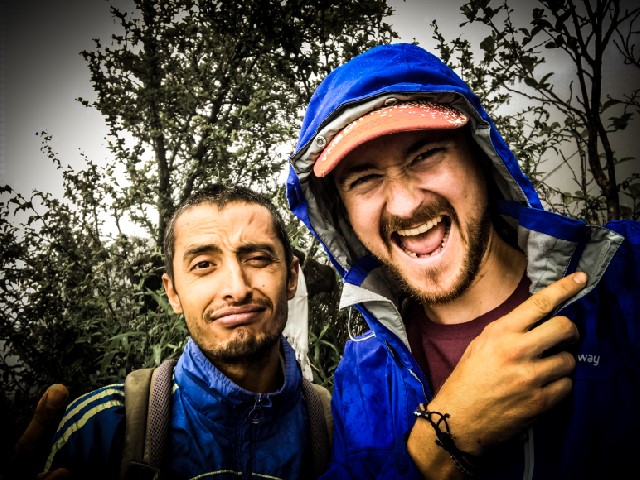 We went to the mata’s place first. Her man was around to welcome us. We gave him most of the food and he made some black tea for us. Then the mata came. She basically had a Chinese ethnic appearance. A few days ago, she had still been meditating in silence for a month. Krishna was so kind to translate my question about happiness into Nepali. “What does happiness mean to her?” The mata answered that there is no state of happiness for her. Life is just acceptable.
We went to the mata’s place first. Her man was around to welcome us. We gave him most of the food and he made some black tea for us. Then the mata came. She basically had a Chinese ethnic appearance. A few days ago, she had still been meditating in silence for a month. Krishna was so kind to translate my question about happiness into Nepali. “What does happiness mean to her?” The mata answered that there is no state of happiness for her. Life is just acceptable.
Then, we went on to the first baba. An old man who was laying in his bed. When we came in, he sat up and we could see his long beard and his orange muscle shirt. As usual, we greeted with “Namaste” and fold our hands in front of us. Krishna was talking Nepalese with the man. We just listened and understood nothing. But whenever the man talked, his face went into a true and unconditional smile from the heart. Almost as strong as the smile I saw in the man’s face in Sri Lanka. He also had these changing and intense face expressions while talking. Krishna said he talked about happiness with the baba. We asked if it is ok to take a picture with him. 🙂
Afterwards, Krishna translated the answer into English. The answer was the following: The happiness in our society is just absence of sadness. We get happy but then we get sad again. For him it is all about a sustainable happiness. To achieve that, the mind needs to go inwards. He believes that a sustainable happiness cannot be achieved in society because the mind is forced to get outside. He is looking at the things the neutral way. He sees things as they are. For example, to him the fact of having food or having no food is not affective to his happiness.
I asked if it is ok to take some more pictures.
I understood that these people detach from the society to not being influenced by it. They leave their families and friends behind to live in loneliness. They have no internet, no newspaper and no TV. They completely depend on the food that is brought up to 2.700 m by other people. The first baba once had no food for two weeks. So he ate sand.
We were thankful for the meeting and said good bye the same way we greeted. “Namaste.”
We went a few meters up to the place of Shivapuri Baba. He is 57 years old and lives in the wilderness since 24 years. The first five years, he lived in a tree cave. Imagine. Summer and winter. Up in that mountain it’s is snowing in the winter. He is quite famous! He showed us some TV shows he was interviewed for.
Baba made tea with milk for us. It tasted kind of special but nice. Jeff was also around as he hiked up yesterday and stayed overnight.
The answer to my question “What does happiness mean to you” was the following in English. “Talking. Thinking. Working right. And meditation. Problem inside is problem outside.”
Before we hiked back to the monastery, we went on top of Shivapuri. There we saw the baba’s previous “home”. Can you figure who was the model for the staute? In fact, this baba is a legned.
The next day, we did some gardening. First, we dug over some parts of the meadow to grow pasture from China. Then we grabbed some fresh vegetable leaves from the garden and removed some tares. That day was pretty packed with work.
In the evening I asked Krishna my question. He answered: “For some people, suffering is necessary in the beginning to find happiness. Children are happy because they are living in present moment. Meaning: A human body needs to be physically, mentally, socially and spiritually aware and satisfied. Sustainable happiness is important.”
The next morning Krishna translated my question to Sonam. She answered, “Finding the right path. To me, it is the path of Tarma, the path of Buddha.”
I understood that a guru once build – or say financed – the monastery. Today, this guru is sixteen years old. First, I did not understand. Then, I was told, he is the seventh incarnation of the guru in a human body. Still, sounds very weird to me… I shall watch the movie: Kundun.
Krishna is a professional yoga master. If you like to improve your yoga skills in Nepal. Feel free to reach out. Check out this video we produced together to get to know this great professional.
The video we produced:
The last sentence of Krishna when we said good bye was: “Being smiling is happiness. And, see you next year.” 🙂 Haha.
I continued reading in the book “The Power of Your Subconscious Mind“. I admire many parts of the book. Thinking of the second baba we met, who said “Inside problem is outside problem”, an interesting parallel came up in the book. It is written there: “As within, so without.” I love that statement as it is short and to the point. Use your conscious and subconscious mind wisely. What you think is what you are and what you think is what you will be. The knowledge and power within us and within our subconscious mind is infinite.
I may warmly recommend you guys to have a read:
[English]
The Power of Your Subconscious Mind [Amazon Link – order now!]
[German]
Die Macht Ihres Unterbewusstseins: Überarbeitete Neuausgabe [Amazon Link – order now!]
In the morning, we spent more than three hours in the kitchen just for cooking. Eating breakfast quickly. For lunch we had the everyday rice, potatoes from the pan, green vegetable leaves, tea and the everyday dal bhat (lentils). For dinner we prepared momos again with mashed potato filling. This cooking and eating rhythm is the same every day. Feels little boring to me meanwhile. But the food is still very tasty.
In this monastery, I somehow feel put back into my grandparent’s home. This kitchen here in Nepal is even some 50 years more back to the past. I went to my bed to get some sleep. The bed is still just 180 cm long for my 188 cm body. Haha.
The 9th morning should be the last morning. After breakfast I cleaned some rain water pipeline since there was a big lake created behind one of the buildings by the rain. Some reading, cooking and a last lunch finished the time at the monastery. Nishan had run up and we walked down together. He helped carrying one of my bag packs. Thanks mate! The public bus brought us close to the home-stay place.
Later, I took a tuk-tuk to Thamel and went to Mahabir’s restaurant where they have really fast internet. Finally back – yeah! I started following up in the online world. A taxi brought me back to a crossing 1 km away from the homestay at 9.30 p.m. Walking through the night was not scary at all.
The next day was a day of blogging. In the morning, Bhagwan and I went for a coffee. Sitting and writing with fast internet. Five Mbit Down/up. Good that the place was almost empty. Online! I love it. 🙂
Bogati from Karmalaya came around in the afternoon. We looked at some pictures of his home far out in the countryside of Nepal.
Early Morning wake up for some breakfast and good bye to the Karmalaya guys. Together with Nishan, the taxi brought us to the airport. Again and again, it’s so different to drive through the capital of one of the per-head-GDP-wise poorest countries of the world. The roads qualify for not more than a mud piste. The rain last night did its job well. When you enter the airport area, which is located quite centrally in the city, you pass a cattle grid. Crazy.
At the airport, flight number 29 to Muscat and finally number 30 to Munich was ahead. 28 flights before, not a single security guy was interested in my survival kit that was given to me from my former Microsoft colleagues. And I passed at least 50 security x-ray checks. This survival kit is kind of a metal box containing different supportive stuff. It’s covered and wrapped by a long rope to stay closed. At the outside, there is a whistle blow fixed. I never opened the box before. The security guy was very interested in understanding what was inside. I told him, “A survival kit. I have no idea myself what’s inside.” He said, “Hmm, a scissors inside?” People queueing behind me, I returned, “It’s difficult to open and close. I have no idea what’s inside”. Thy guy checked it four times with the x-ray. My orange bag was checked three times. My tablet and camera put outside, which is more than unusual in these countries, I feel. Then I offered the guy to open the survival kit to release him from his security concerns. Applying some inter-man physiological methods they guy came down and trusted me. To fulfil his job as well as to show some power and to give others silly advice, he asked me to detach the whistle blow and put it into the backpack loosely. Hä, what do I not understand here? What’s the reason for that? I did not care but a wild laughter rose inside me that I had to push back mentally. Haha. I put the whistle blow loosely inside my backpack. A police guy a few meters further had to put his fancy stamp on my boarding pass to prove himself important too. Different countries, different customs.
I went to the gate to board my flight home. …Being thankful for owning a German travel passport which made world traveling easy.
This was the last chapter of six moth traveling around the world…
A final reflection about the whole world-rount trip
My personal highlights may be collected and summarized below.
I saw a sky so clear you can see millions of stars creating milky way.
I was involved in a car accident where the police had to control the situation with automatic guns.
I learned Spanish in Panama City to survive in Central- and South-America.
I hiked 39 km a day through Patagonia until my feet stopped from holding me off the ground.
I have been to beaches with sand so white and palmtrees so green, one could call paradise.
I hiked through the cloud forests to reach a lake in a volcano crater.
I met people spontaneously with conversations never to forget.
I hitchhiked with an Argentinian hat dealer and bought my black and white world traveler boina hat from him.
I hiked through caves that suddenly were flooded by fucking loads of rain water.
I understood poverty on his planet in countries like Bolivia or Nepal.
I got to love the Dutch. 🙂
I reunioned with five guys from the Entrepreneurship programme.
I bought a guitar in Bolivia to make people happy with my music around the world.
I biked the death road in Bolivia where my belongings seemed to be lost. Sadly, not all of us returned.
I saw Machu Piccu with all its mystic beauty as the first person in the morning.
I flew over ancient Nasca Lines.
I sand boarded downhill hundreds of meters on sand.
I saw countrysides so beautiful and stunning, your eyes do not want to stop looking at.
I experienced how lost things come back to you as of the pure good will of people.
I drove on roads so empty like the devils heart for hundreds of km.
I swam with the biggest fish on this planet in the wild open sea.
I went to temples more impressive than Neuschwanstein Castle.
I slept at a far outside countryside village at a original Viatnamese local families home.
I kayaked the world heritage Halong Bay.
I performed a guitar solo play in a locals’ bar in Hanoi, Vietnam, and received applause.
I swam in the infinity pool of Marina Bay Sands.
I saw a herd of elephants walking through a town centre. No one was hurt.
I volunteered in a Buddhism monastery in one of the poorest countries of the world.
I talked about happiness with people detached from society but living in the wilderness for more than 24 years.
I boarded 30 flights in 174 days to visit 15 countries around the globe.
I am a world traveller following my dreams.
I wrote this blog to inspire people following their dreams.
A good friend in Germany asked me before I left Germany, what will I miss most. Back then I answered: My sister, parents, flat, guitar, VW Golf, G-Unit and friends. Reflecting on that when I was back at the monastery, I missed the following things the most: My sister, parents, G-Unit, friends, the German Autobahn. Also I must say that I missed my guitar a lot, but this shortfal was solved back in Bolivia. Well, who cares about a fixed home… Haha.
What’s up to come?
I will not return to my previous life. There is a new path ahead. Dematerialised. Clear. Wiser. Selfless but selfish at the same time.
I feel like a well-shaped beautiful feather ball in a slingshot pointing with maximum tension up in the sky. Let me fly! Towards my new dreams!
A summary and reflection about the happiness statements collected all around our globe will follow. Stay tuned. Stay inspired. Stay happy.
Feel free to reach out if you have any questions or contributions. I’m happy to hear from you! Thank you so much for your continous interest in this blog!
Stay happy, wild and be yourself!
See you soon my friends!
| [English] |
[German] |
|---|
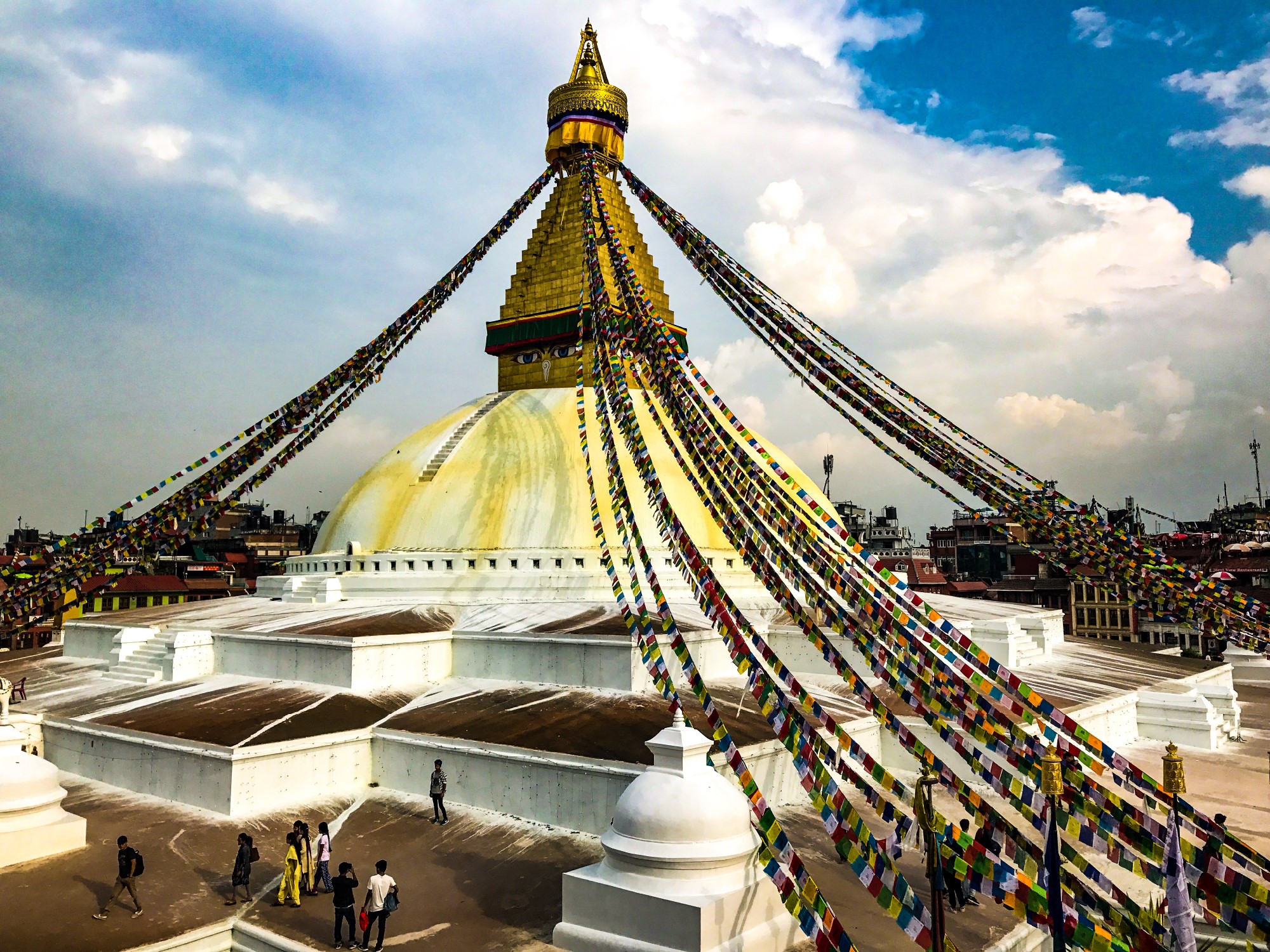


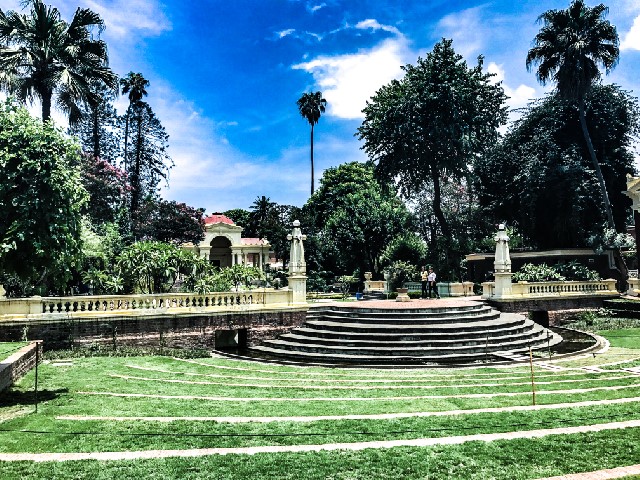
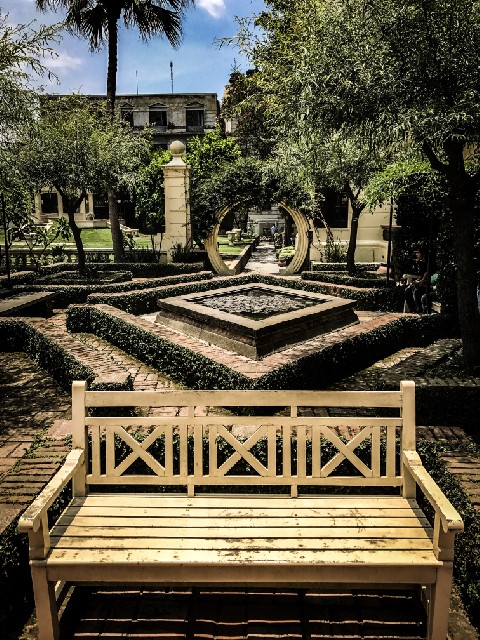
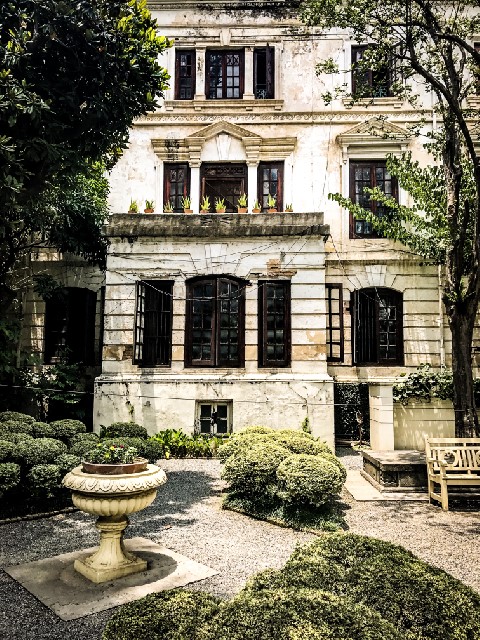
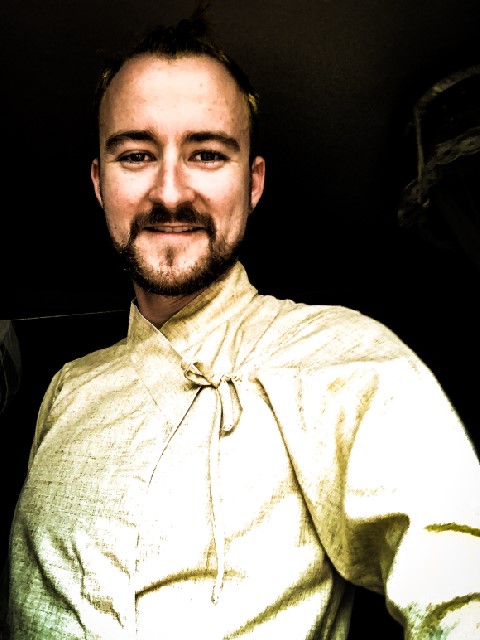
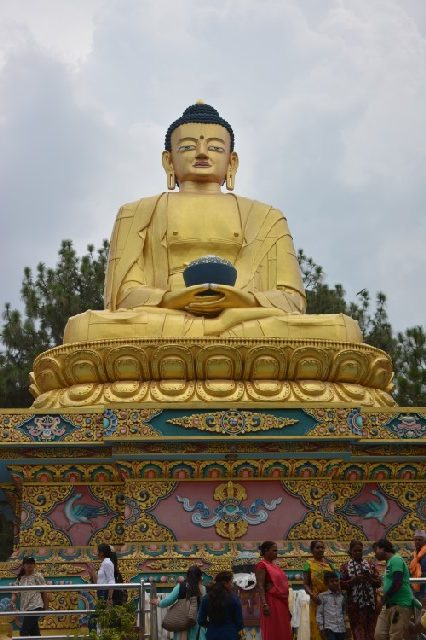
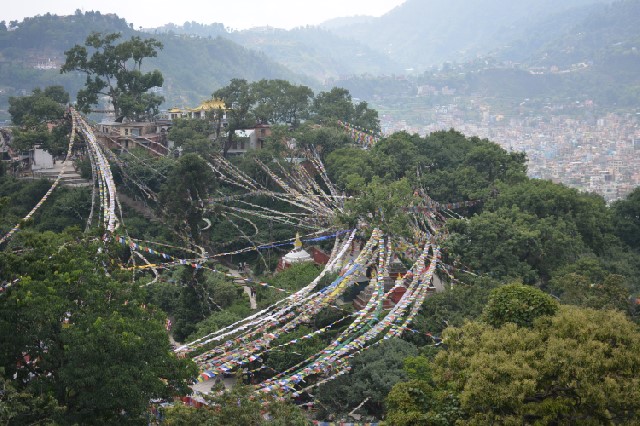



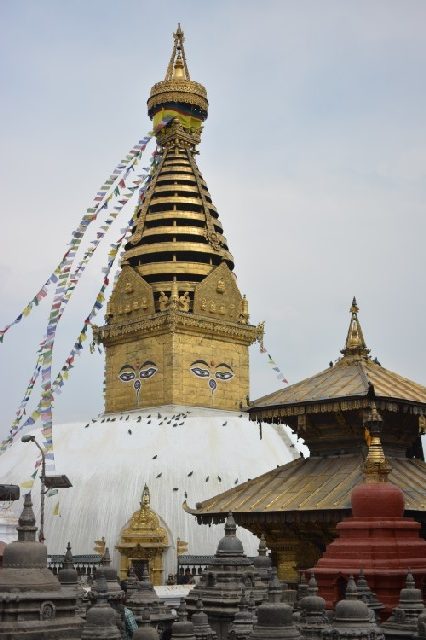
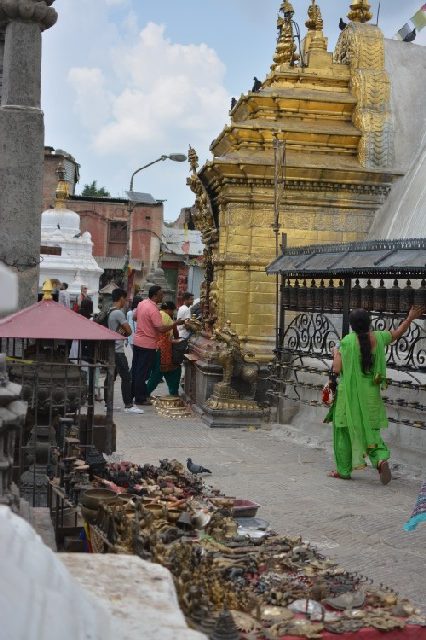
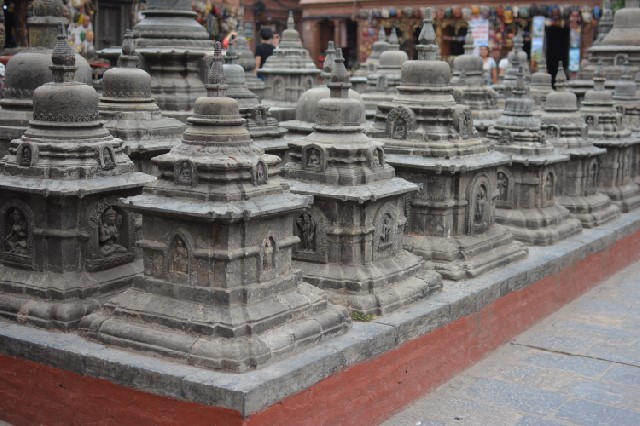
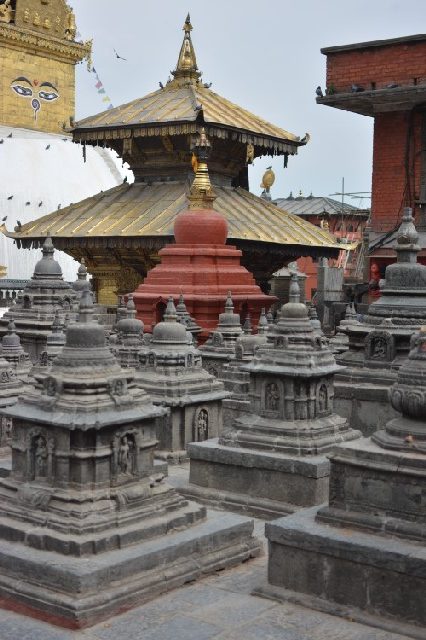
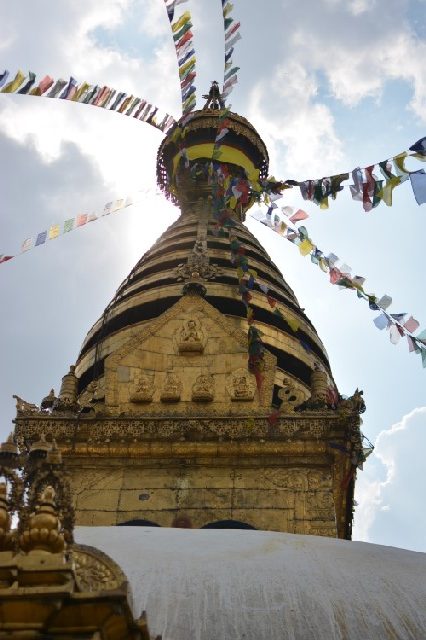
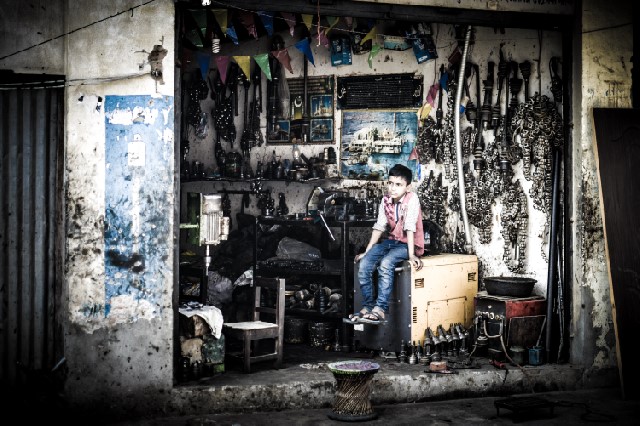

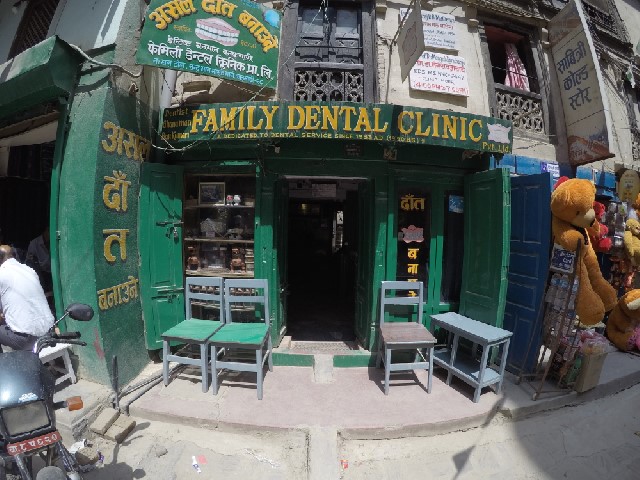



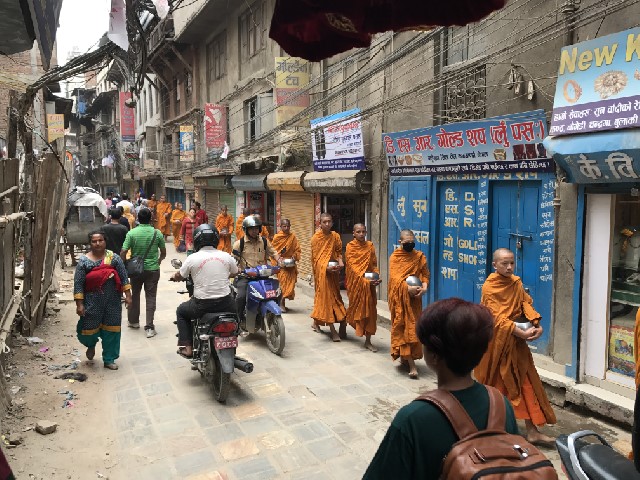
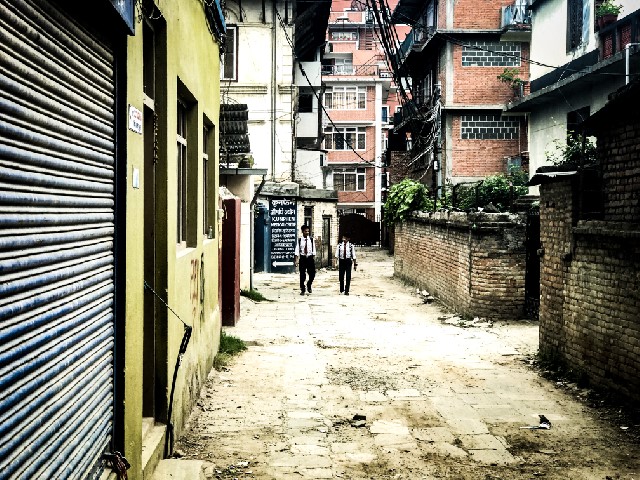
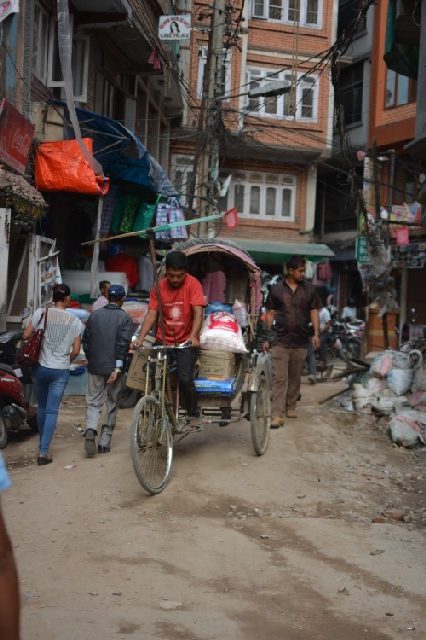

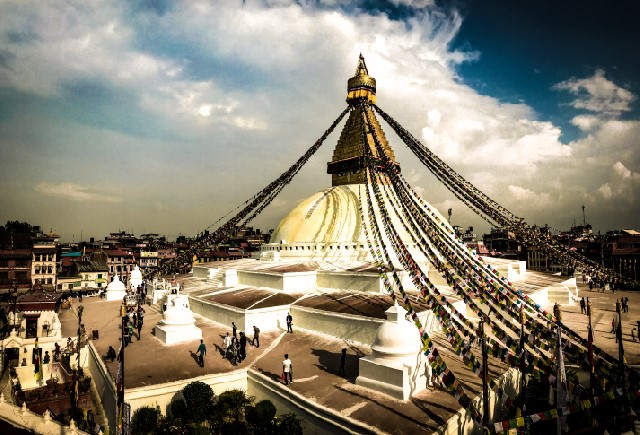
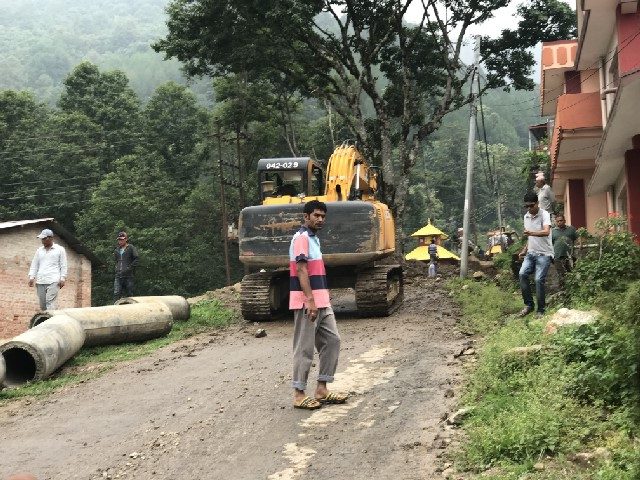
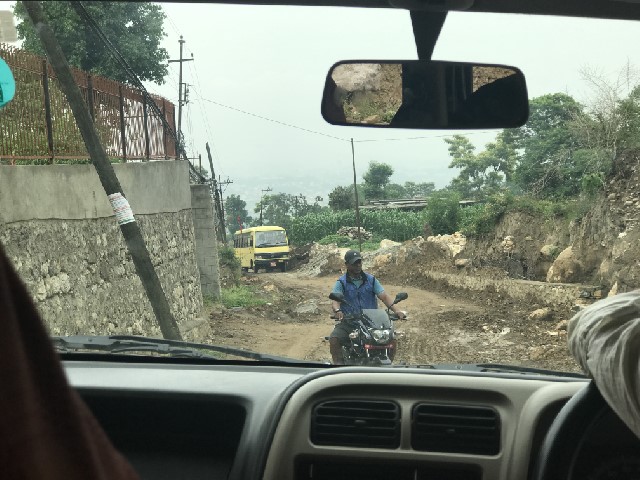
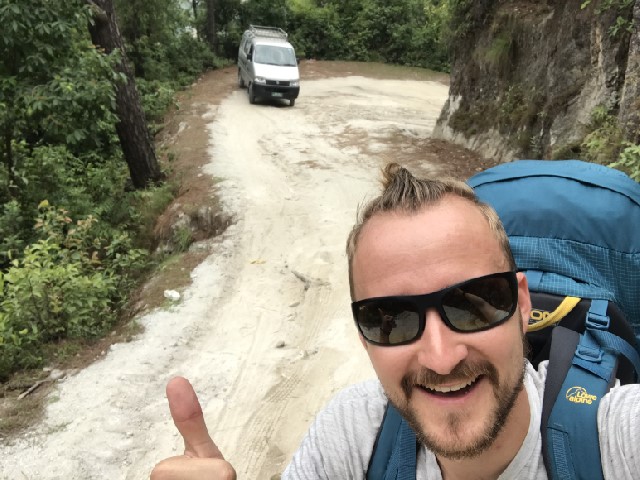
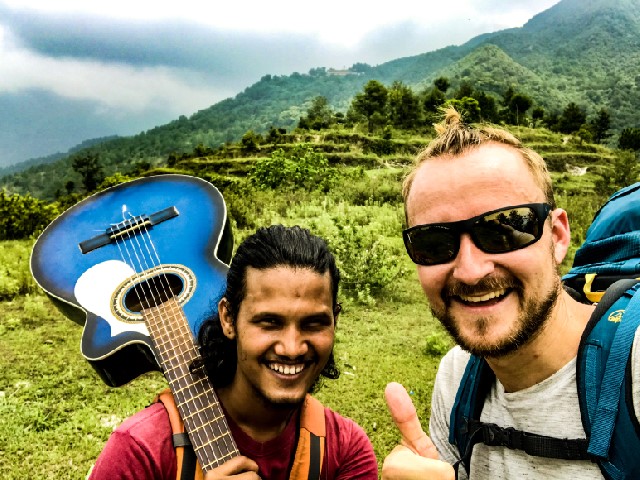
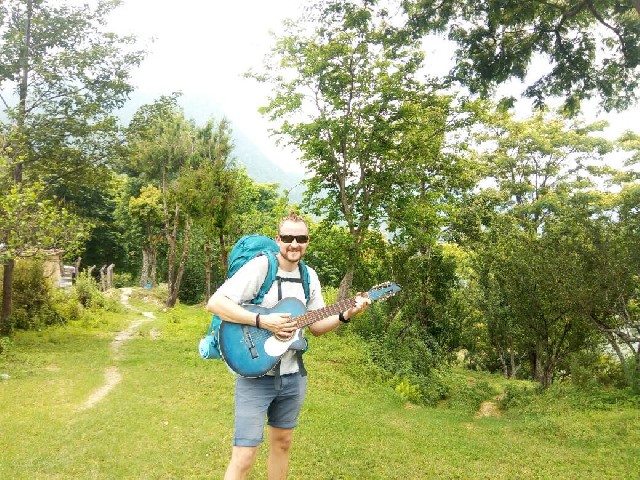
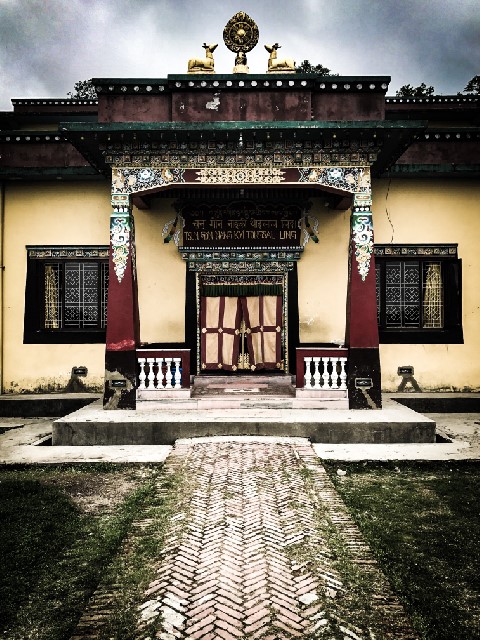
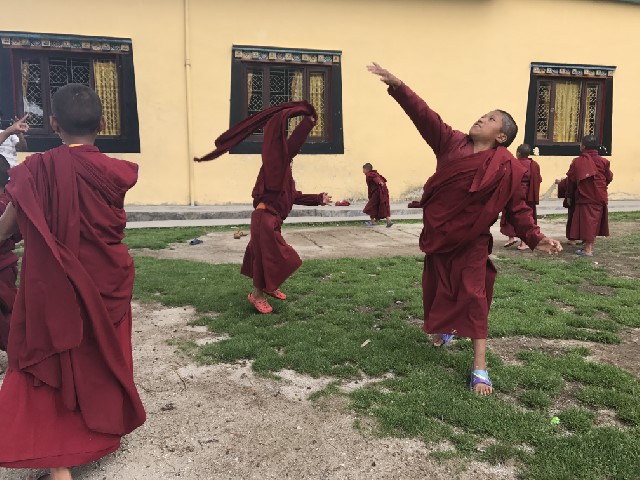
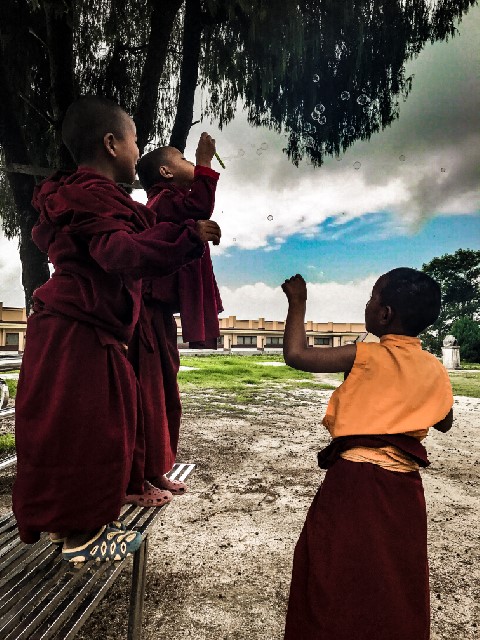


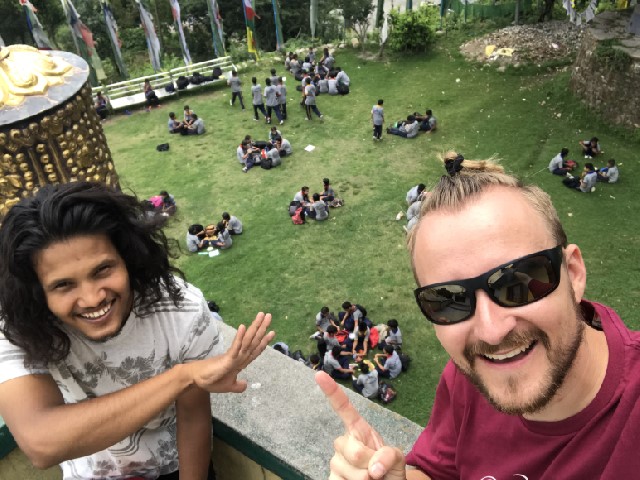
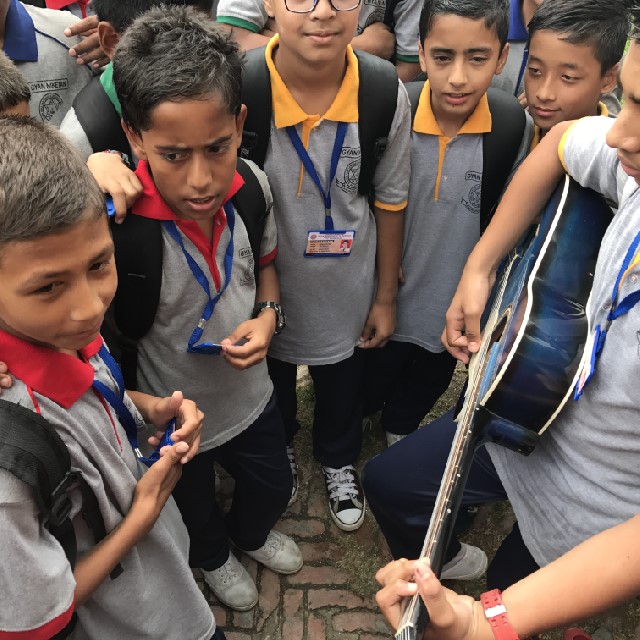

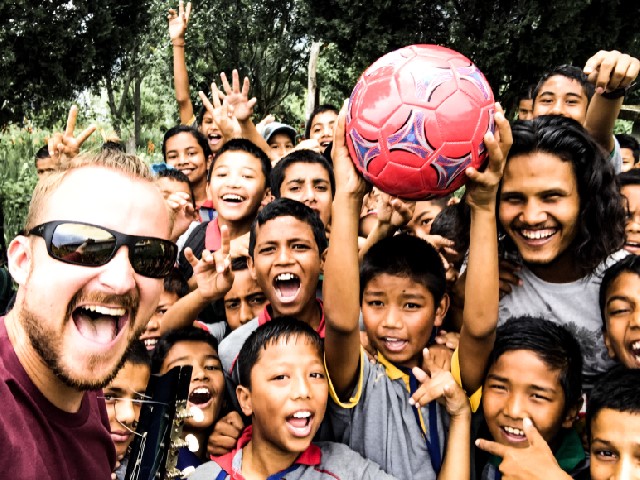

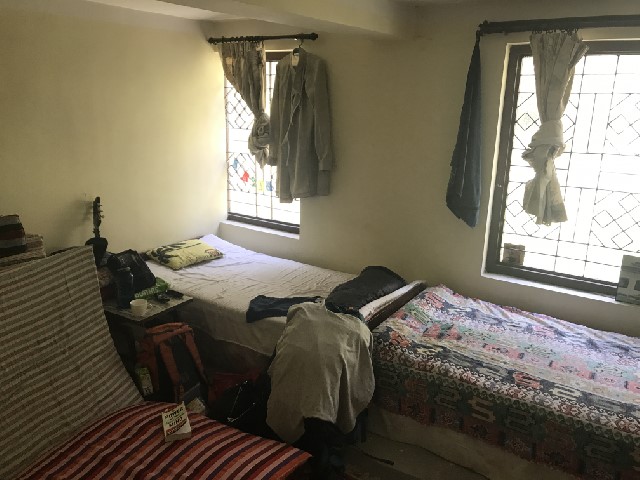



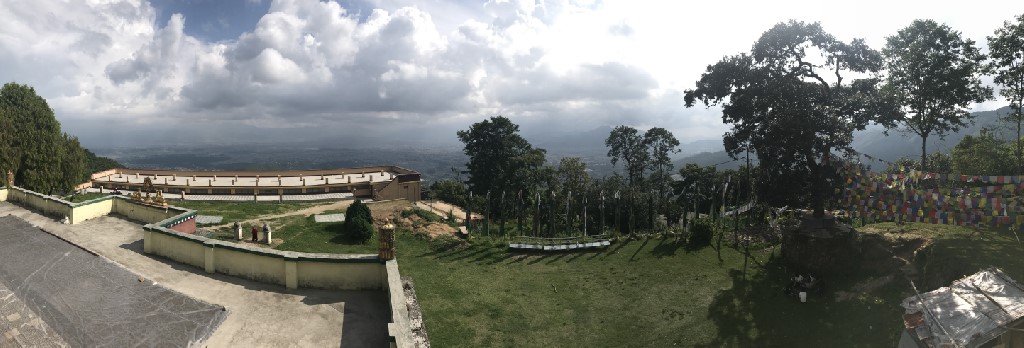
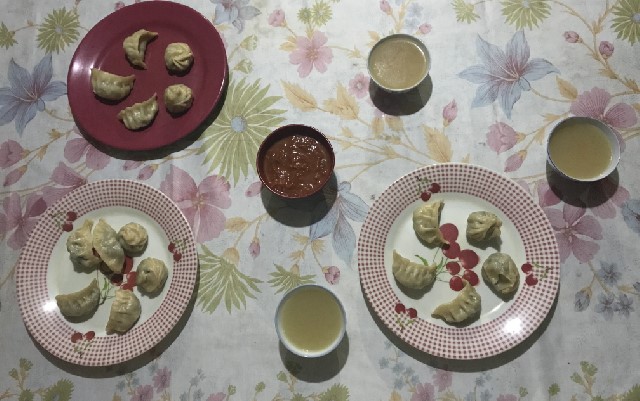


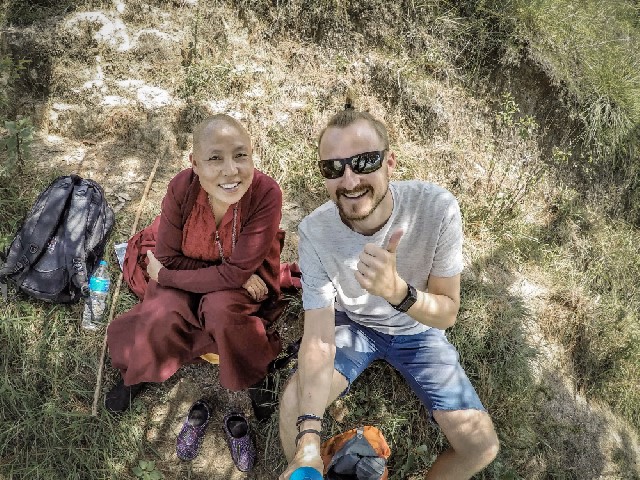

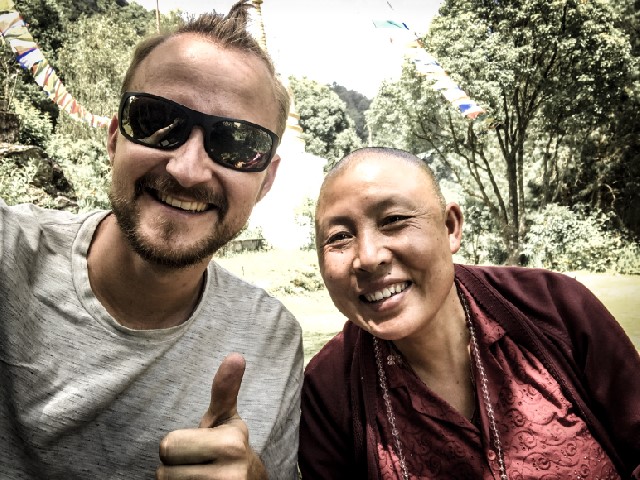
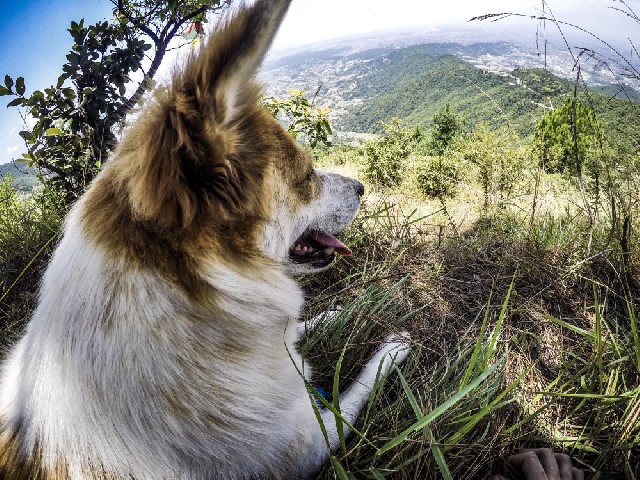
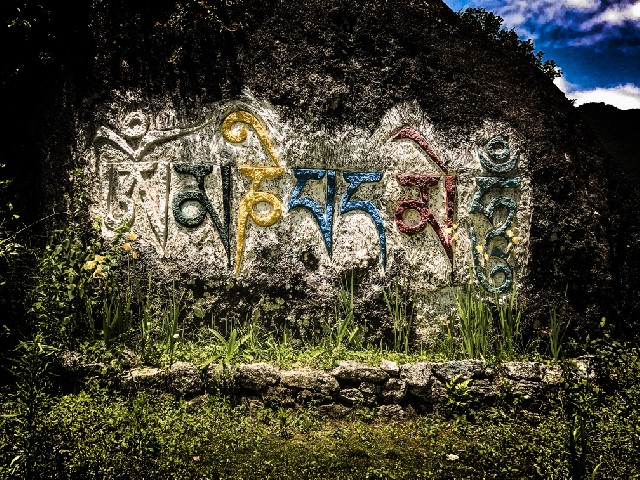
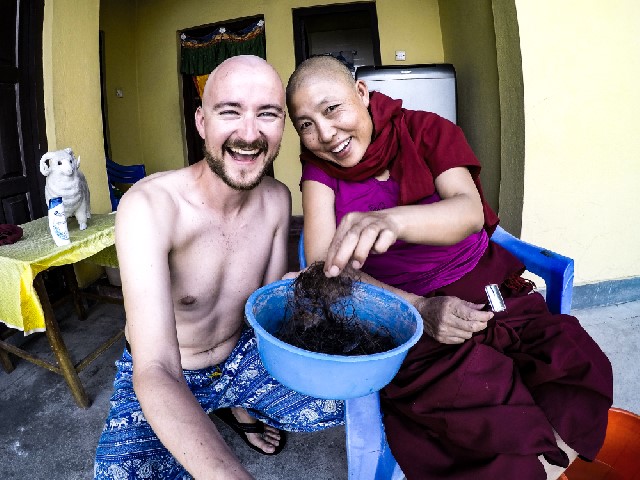

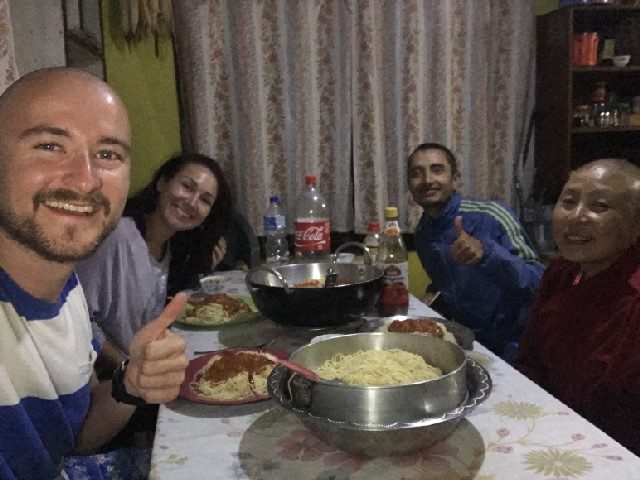
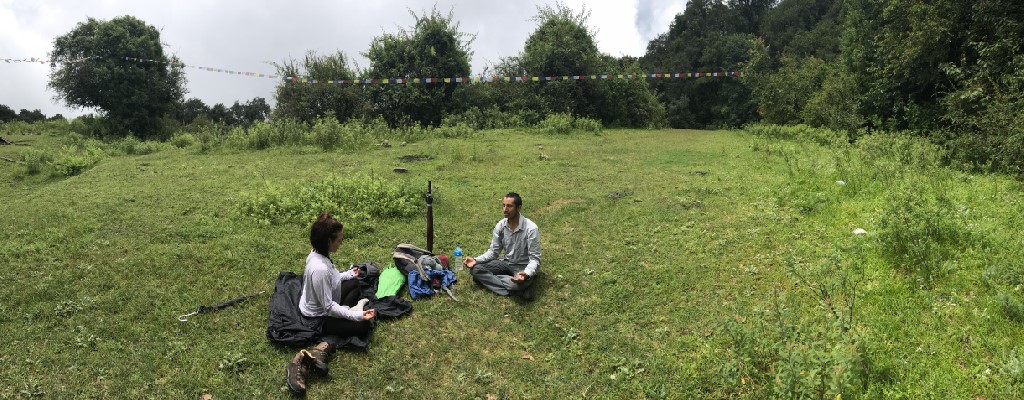

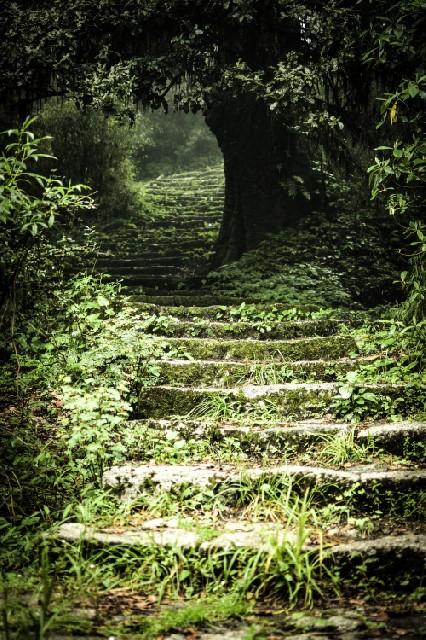
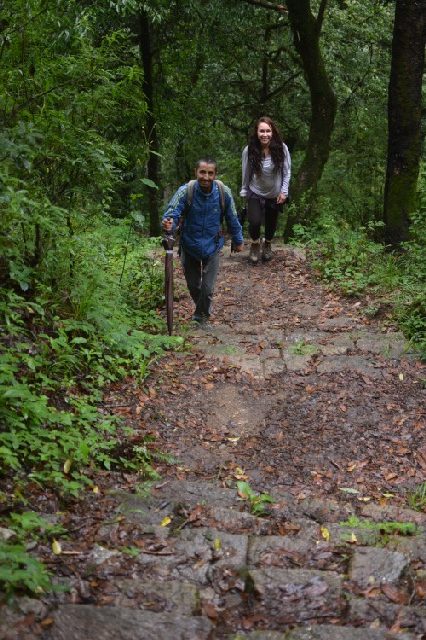
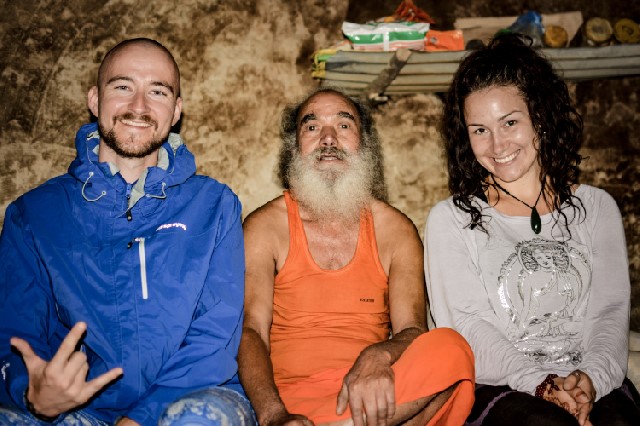

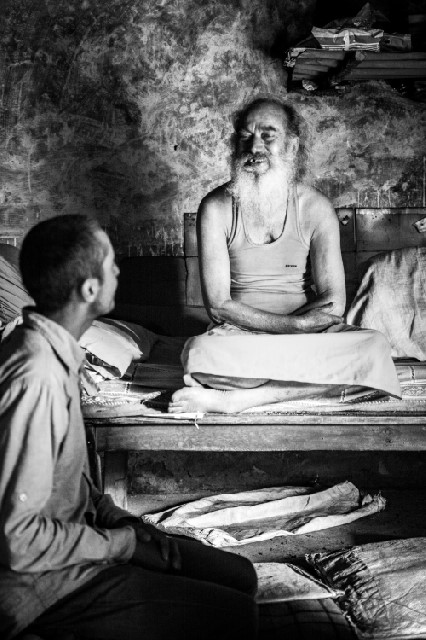
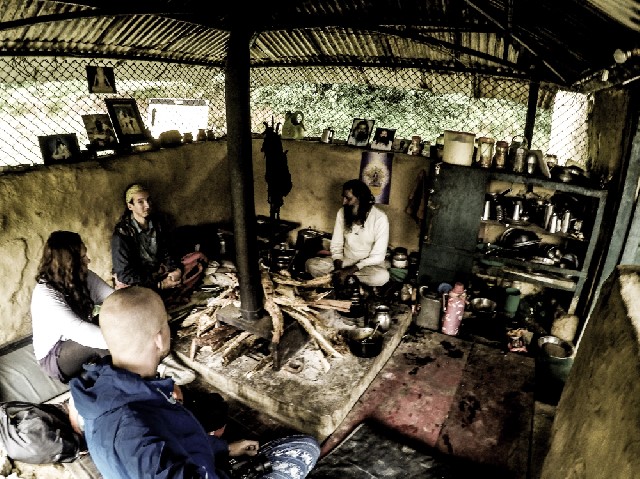

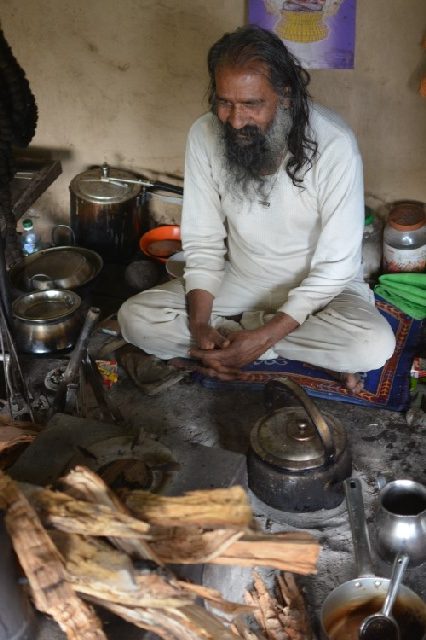
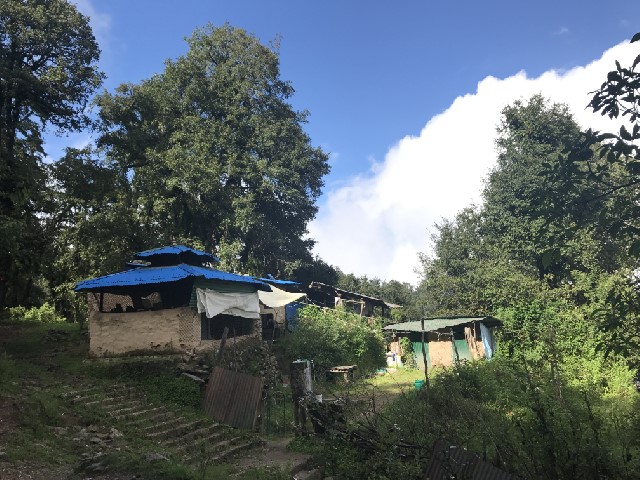
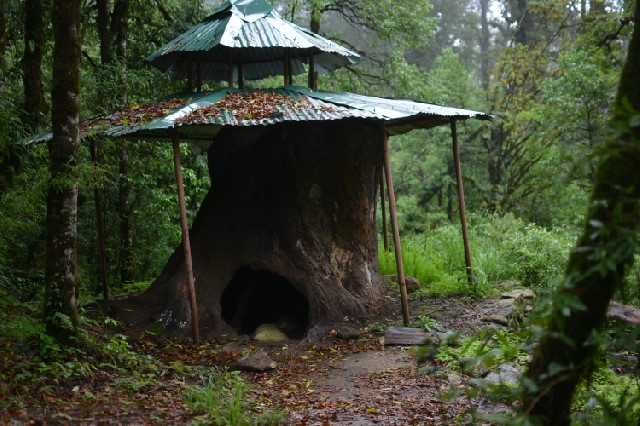
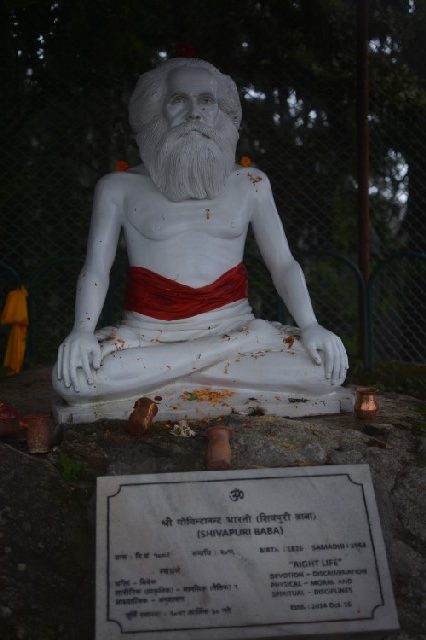
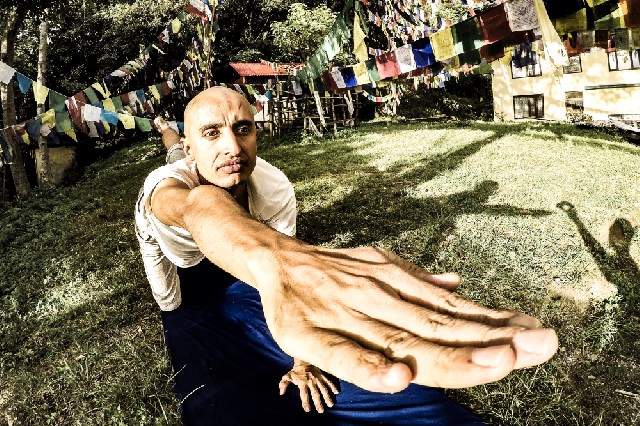

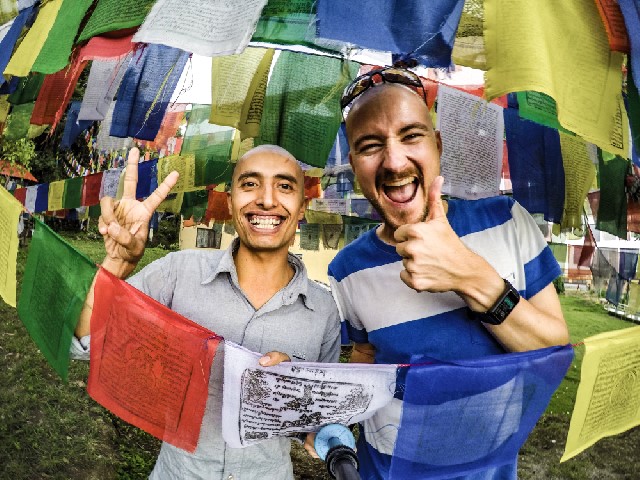


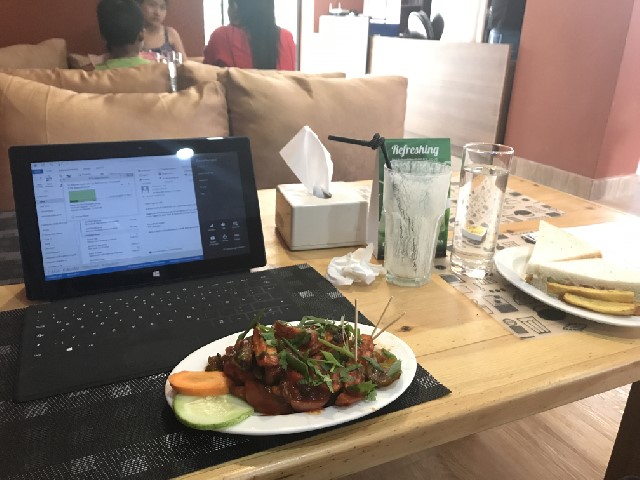

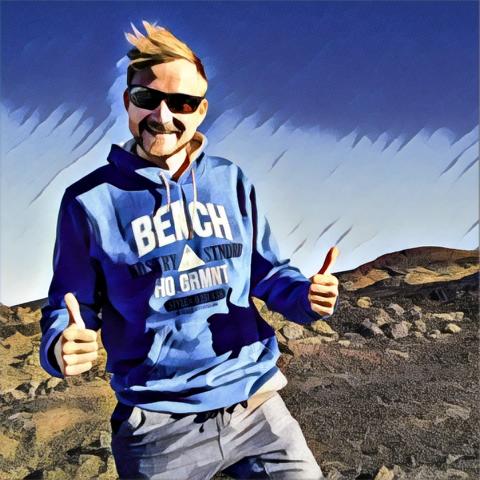
Thanks for finally sharing your last adventures. Your style and content of writing is amazing. Your different experiences makes you a rich man.
Thank you Anja. I’m very happy you enjoy reading on my blog!